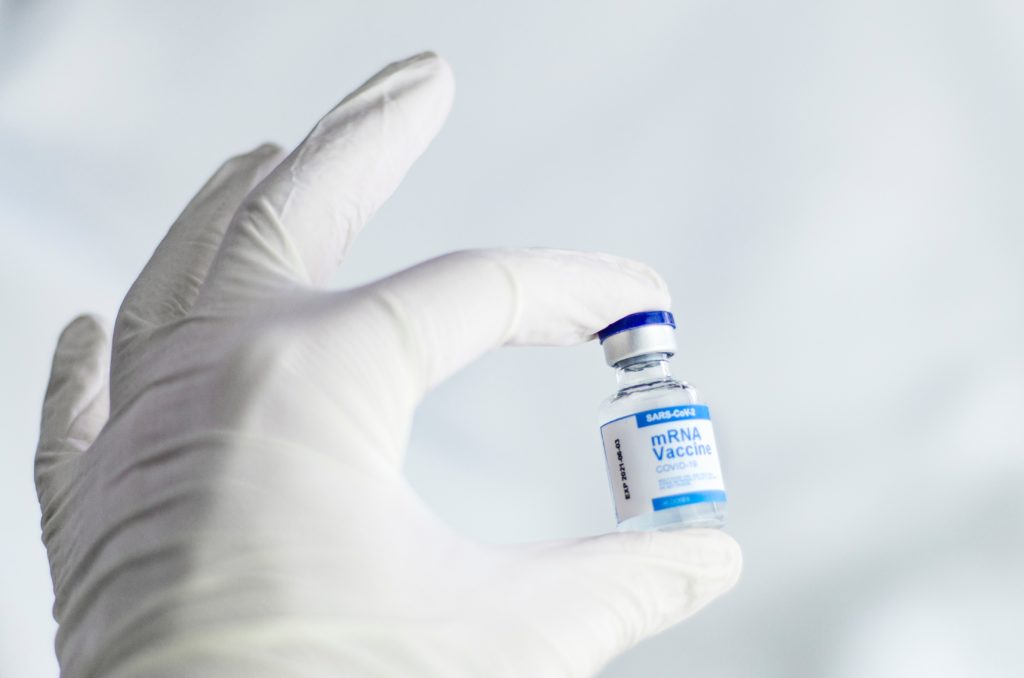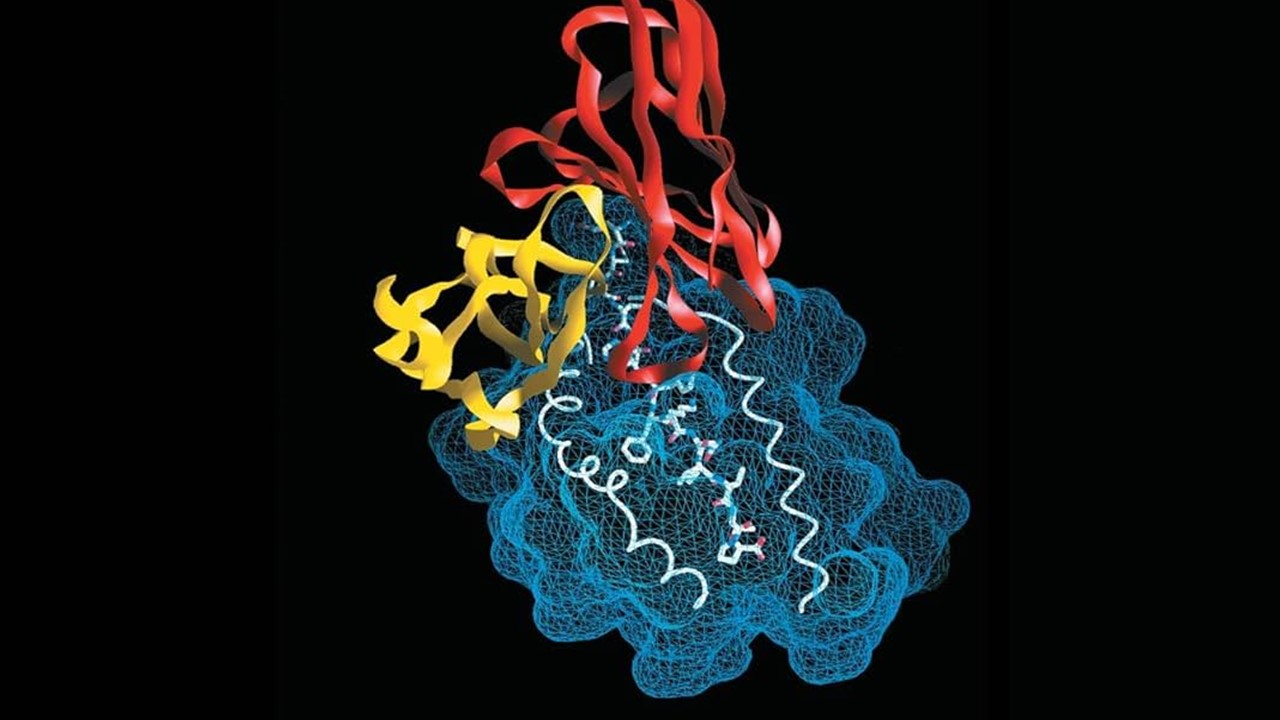
Ribonucleic acid (RNA) has proven in the last decade to be a valid therapeutic target for a multitude of diseases. The ability to manipulate the genetic code to produce almost any protein is one of the many advantages that has also led to the development of RNA-based vaccines. This article looks at many positive outcomes continued research into this molecule can bring, including successful mRNA COVID-19 vaccines and the discovery of small molecules against RNA targets in HIV.
Introduction to RNA
RNA is a molecule made up of small building blocks called nucleotides. RNA is primarily single-stranded, however special RNA viruses exist as double-stranded. RNA is synthesised from DNA by an enzyme known as RNA polymerase in a process called transcription. The primary function of RNA is protein synthesis which occurs in a process called translation. Other critical functions include the modification of other RNAs and regulation of gene expression during growth and development. The three main forms of RNA involved in protein synthesis are mRNA (messenger RNA), rRNA, and tRNA.
In terms of their association with disease, genetic mutations that occur in RNA are a problem. Errors in the sequence of nucleotides can result in defects in the RNA complex impacting the cellular processes that RNA maintains. As a result, disruption to cellular processes can lead to disease development.
A 2018 review highlighted the specific mutations in the gene coding for RNA exosome subunits that cause human disease. The RNA exosome is a multi-unit protein complex that catalyses the processing or degradation of many types of RNA. According to another review of RNA, mutations in the exosome subunit genes EXOSC3 and EXOSC8 have been associated with pontocerebellar hypoplasia, a group of rare conditions characterised by an abnormal prenatal development the cerebellum and brainstem. The abnormally small cerebellum and brain stem result in defined psychomotor retardation. Manifestations of psychomotor retardation include “slowed speech, decreased movement, and impaired cognitive function”.
Principles for targeting RNA with drug-like small molecules
With diseases like pontocerebellar hypoplasia which support the implication of RNA mutation, it opens the door for targeting RNA with drug-like small molecules. The great diversity in the structure and function of RNAs increases the number of options for druggable targets. Several studies establish that RNA is a valid target of small molecules, and that ligands can bind to isolated binding pockets in RNA. One such discovery was “the development of small molecule screens against functionally defined viral RNA motifs, such as human immunodeficiency virus-1 (HIV-1)”.
There are three main components necessary to enable optimal RNA-targeted drug discovery as highlighted in a Nature article: (1) valid therapeutic RNA target, (2) suitable screening approach to identify ‘drug-like lead molecules’ with the desired pharmacological properties, and (3) establishing RNA motifs with high specificity and potency binding to a high quality pocket. It was also emphasised that ensuring the ligand-binding properties of the RNA target was equally as important as the validated target RNA itself.
Latest therapeutic outcomes: RNA-based vaccines
Vaccines take advantage of the highly evolved human immune system, and essentially trick it into thinking it has become infected in order to promote the production of antibodies by B cells.
These types of white blood cells produce antibodies to target and destroy the pathogen. The antibody level remains high in the body for up to two weeks after infection, which allows memory B cells to store copies of these antibodies specific to the pathogen. Live attenuated, inactivated pathogens and sub-unit vaccines are conventional vaccines which have proven successful against many diseases including polio and smallpox. However there have been flaws, with some able to evade the adaptive immune response.
mRNA vaccines are a promising alternative to conventional approaches to vaccination. There are two types of mRNA vaccines: non-replicating mRNA and self-amplifying mRNA. mRNA is the “intermediate step between the translation of protein-encoding DNA and the production of proteins”. RNA vaccines initiate an immune response by introducing mRNA into the cells which have been engineered to carry the genetic instructions to produce the pathogen antigen. Through protein synthesis, the antigens are created which stimulate an immune response in the host and antigen copies are stored by memory cells for future immunity.
The many advantages to using RNA-based vaccines have been acknowledged for a number of years and are highlighted in a 2018 Nature article:
• mRNA-based vaccines are non-infectious
• mRNA is degraded by normal cellular processes, so there is no naked genetic code remaining in the host’s cells
• mRNAs possess an ‘inherent immunogenicity’. Immunogenicity refers to the ability of a foreign substance to induce an immune response. This “can be down-modulated to further increase the safety profile”
• Production of mRNA vaccines shows potential for rapid, inexpensive, and scalable manufacturing
This is a simplification of the mechanism for the mRNA COVID-19 vaccine. Self-amplifying mRNA specifically has been used in many phases of the trials for COVID-19. In the development of the COVID-19 vaccine, it was important that the mRNA of the virus was modified. Unmodified viral mRNA is highly immunogenic and as a result can activate many pathogenic sensors which is a safety risk. In a 2021 study, it was emphasised that modified mRNA of the virus didn’t activate these sensors which was crucial to avoid excessive inflammation resulting in undesired side effects.
In a 2021 review, it was stated that the difference between the non-replicating and self-amplifying mRNA is that the former encodes only the protein antigen, while the latter can also encode the protein but also facilitates RNA replication. In the same article it raises one of the challenges with mRNA vaccines – stability. The instability of mRNA vaccines is due to their vulnerability to degradation by enzymes known as RNAases.
In order to overcome this instability issue, several approaches have been employed. One strategy has been molecular stabilisation. According to the review, this is the engineering of the sequences and structure of the mRNA in order to improve stability and extend half-life. Half-life refers to the time taken for the concentration of a compound in the body to be reduced by 50%. Improving the half-life of a vaccine ensures it remains in the body long-enough to produce the desired immunogenic action.
Charlotte Di Salvo, Lead Medical Writer
PharmaFeatures
Subscribe
to get our
LATEST NEWS
Related Posts

Medicinal Chemistry & Pharmacology
Aerogel Pharmaceutics Reimagined: How Chitosan-Based Aerogels and Hybrid Computational Models Are Reshaping Nasal Drug Delivery Systems
Simulating with precision and formulating with insight, the future of pharmacology becomes not just predictive but programmable, one cell at a time.

Medicinal Chemistry & Pharmacology
Coprocessed for Compression: Reengineering Metformin Hydrochloride with Hydroxypropyl Cellulose via Coprecipitation for Direct Compression Enhancement
In manufacturing, minimizing granulation lines, drying tunnels, and multiple milling stages reduces equipment costs, process footprint, and energy consumption.

Medicinal Chemistry & Pharmacology
Decoding Molecular Libraries: Error-Resilient Sequencing Analysis and Multidimensional Pattern Recognition
tagFinder exemplifies the convergence of computational innovation and chemical biology, offering a robust framework to navigate the complexities of DNA-encoded science












